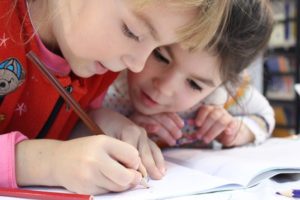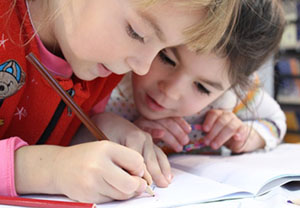For children who fall on the autism spectrum, learning can be a frustrating undertaking. With an array of different needs and abilities to think about, it can be difficult to find engaging lesson plans that keep their minds and bodies stimulated and interested. Fortunately, there are several simple games and activities you can play with your child to keep them involved in the learning process and allow them to work on social skills, fine motor skills, and communication–three things that don’t always come easily to individuals on the autism spectrum. 
Here are a few of the best ways to help your child learn and play while staying comfortable and feeling safe.
Colorful activities and motion
For many kids on the autism spectrum, color and movement play a huge part in their development and ability to engage with others. There are several ways you can incorporate both of these into their daily lesson plans, including:
- Fill ice trays from the dollar store with water tinted with different shades of natural, organic food coloring made from fruits, vegetables and spices. Cover tightly with plastic wrap and place popsicle sticks into each section, then freeze. When they’re ready, pop them out and have your child “paint” with the ice on a piece of thick construction paper. They’ll love the colors, the feel of the cold water as the cubes melt, and the feeling of the cubes skating across the paper.
- Take several different colors of tissue paper and show your child how to shred it into strips using only your hands. Take your time and let them tear the paper however they want. When you have several strips in varying sizes, adhere them to a piece of construction paper using a glue stick. Design a pattern or create a beautiful flower. This activity engages sight, sound, and touch for fun sensory play.
- Fill a plastic water or soda bottle with water, natural food coloring, and glitter, then drop in small foam letters from the alphabet. Put the lid on tight–or glue it on–and have your child shake it up and look for different letters. The movement of the water and glitter will keep him engaged, and it’s a great way to practice the alphabet. This activity should only be done under a caregiver’s supervision–your child should never have an opportunity to open the bottle and be exposed to the liquid inside.
- Using bins from the dollar store, create a sensory area with separate spaces for rice, soft sand (you can also use kinetic sand, which tends to be a little less messy), water, bath beads, and any other item with a nice texture. Since this activity is meant to allow your child to get his hands in as many bins as possible, this is a good one to do outside.
Communication
Learning to communicate is often a big hurdle for some kids on the autism spectrum, so finding games and activities that allow them to express themselves is important.
- If your child likes puzzles, give him one to put together that is missing one piece. When he’s nearly completed it, he’ll need to ask for help to find the last piece. This is a good way to introduce the concept of letting someone know he’s in trouble or needs assistance.
- Fill an opaque bag with a few items that your child is interested in, such as small toys, and have him ask you questions about them in order to figure out what they are. This game opens up a line of communication and will help him learn different ways to get information.
- Get creative. Have your child draw a self-portrait, or tell him a short story of your own creation and have him draw a scene from it. Learning to listen and draw information from others is crucial for children on the autism spectrum.
- If he’s old enough, have him help you with a task, such as washing the car or changing the oil. Many kids are fascinated with cars and other vehicles, so allowing him to help with such an important job will be a big deal, and it will touch on communication and fine motor skills, as well.
This article was contributed by Jenny Wise
Jenny Wise home-schools her four awesome children. As any homeschooling parent knows, every day is an adventure, and Jenny has begun chronicling her experiences at SpecialHomeEducator.com. She hopes to use the site to connect with other home-schoolers and to provide helpful advice to parents who may be considering a home education for their kids.
Join our Free Autism Recovery Workshop, The 4 Stages to Naturally Recover from the Symptoms of Autism. Stage 1: Healing the gut, Stage 2: Natural heavy metal detoxification, Stage 3: Clearing the co-infections, Stage 4: Brain support and repair. Reserve your online seat here.
Help your child get the optimum results in Karen’s step-by-step online program, The Autism Moms Mentor, working to improve the biological health aspects for better focus and concentration, improved sleep, calmer moods, and a lot more. Already in over 35 countries, this program offers you the natural resources I used to recover my own son. It is unique in that it walks you through not only gut healing and detoxification, but also the co-infections often left out of a recovery program. It also includes additional components such as muscle testing and emotional clearing to empower you to get the best possible outcome with support from a mom who has done it!










